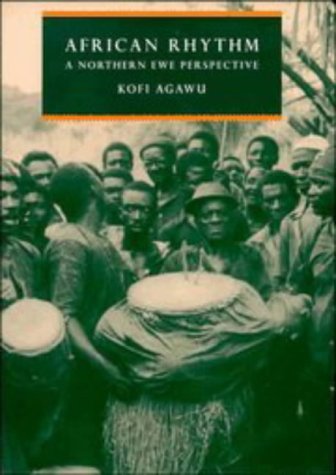African Rhythm Hardback with accompanying CD: A Northern Ewe Perspective

|
Author: Kofi Agawu Price: $ 260.13 (used) Medium: Hardcover (237 pages) Publisher: Cambridge University Press 1995-11-24 |
Editorial Description
The distinctive quality of African music lies in its rhythmic structure and scholarly work on this music has usually stressed drumming as the site at which 'complex' rhythms are cultivated. Kofi Agawu argues that drumming is only one among several modes of rhythmic expression and that a more fruitful approach to the understanding of African music is through spoken language. In this book, he constructs a soundscape of the Northern Ewe people of Ghana which demonstrates the pervasiveness of a variety of forms of rhythmic expression in their daily lives. He then devotes a chapter each to an analysis of rhythm in language, song, drumming and dancing, musical performance, and folk narration. A concluding chapter addresses some of the ideological factors that have influenced the representation of African rhythm. An accompanying CD enables the reader to work closely with the speech and song discussed.Reader Reviews
Modeling Rhythmic SignificationWhile many studies on African rhythm approach this subject by focusing on its instrumental, percussive manifestation, this distinctively regional research assumes the centrality of the Ewe and Siwu languages at the basis of its characterization. Expanding on Nketia's general work on Ghanaian musics, Agawu combines anthropology, linguistics and European music theory as he takes the reader from the ethnography of a fictional soundscape (rhythmic physical activities in an Ewe community over the course of a day) to the rhythmic properties of the language itself (tone patterns, temporal spacing), concluding with accounts of two performances and conceptual models of Ewe rhythmic processes. He points out that the rhythmic qualities (stress, quantity and resultant pattern) of Ewe or Siwu languages so far have not received the same attention that tonal features have. A centerpiece of Agawu's presentation is his model of "Northern Ewe modes of rhythmic signification", a model that he introduces early on and later revises in its representative potential. It situates speech at the inception of rhythmic expression, yet allows "feedback-loops" and other generative impulses outside its domain to affect the musical process. Refreshing is Agawu's authoritative, yet similarly self-effacing and non-imposing writing style. His clarity of communication and lack of superfluous intellectualism makes this a very accessible and "alive" text, there is neither too much unduly self-referential pathos nor artificial scientific detachment in his descriptions. The book really seems to rest on Agawu's innate connection to this culture, and it is all the more interesting to see how he utilizes analysis and conceptualization of Western European origin to frame the issues in his discussion. At all times, while neither being afraid to honestly acknowledge compromise nor ideologically prevented from proceeding in such fashion, Agawu is aware of any attached implications that come hand in hand with this practice, yet doesn't deem them mutually exclusive.
